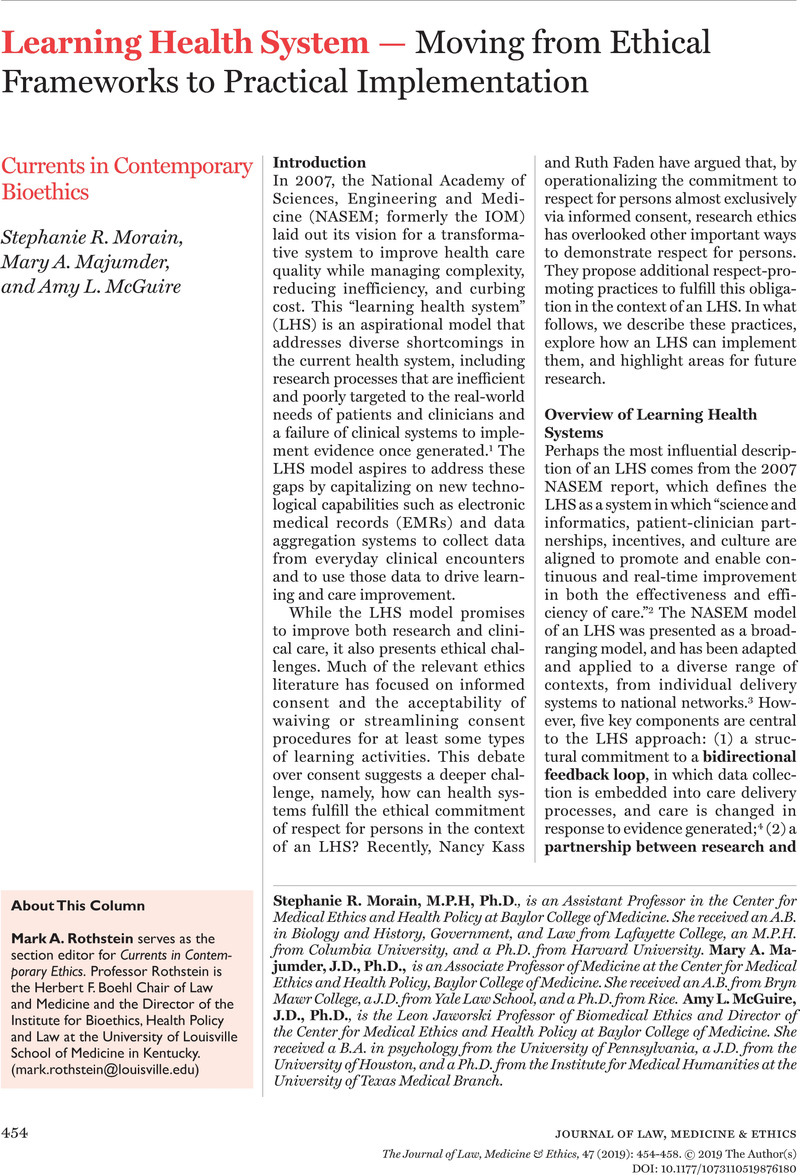Crossref Citations
This article has been cited by the following publications. This list is generated based on data provided by Crossref.
Nevedal, Andrea L.
Reardon, Caitlin M.
Jackson, George L.
Cutrona, Sarah L.
White, Brandolyn
Gifford, Allen L.
Orvek, Elizabeth
DeLaughter, Kathryn
White, Lindsay
King, Heather A.
Henderson, Blake
Vega, Ryan
and
Damschroder, Laura
2020.
Implementation and sustainment of diverse practices in a large integrated health system: a mixed methods study.
Implementation Science Communications,
Vol. 1,
Issue. 1,
Trinkley, Katy E.
Ho, P. Michael
Glasgow, Russell E.
and
Huebschmann, Amy G.
2022.
How Dissemination and Implementation Science Can Contribute to the Advancement of Learning Health Systems.
Academic Medicine,
Vol. 97,
Issue. 10,
p.
1447.
Grob, Rachel
Gleason, Katharine
McLean, Paul
McGraw, Sarah
Solomon, Mildred
and
Joffe, Steven
2022.
Patients' roles in governance of learning: Results from a qualitative study of 16 learning healthcare systems.
Learning Health Systems,
Vol. 6,
Issue. 1,
Anderson, Jami L.
Mugavero, Michael J.
Ivankova, Nataliya V.
Reamey, Rebecca A.
Varley, Allyson L.
Samuel, Shekwonya E.
and
Cherrington, Andrea L.
2022.
Adapting an Interdisciplinary Learning Health System Framework for Academic Health Centers: A Scoping Review.
Academic Medicine,
Vol. 97,
Issue. 10,
p.
1564.
Easterling, Douglas
Perry, Anna C.
Woodside, Rachel
Patel, Tanha
and
Gesell, Sabina B.
2022.
Clarifying the concept of a learning health system for healthcare delivery organizations: Implications from a qualitative analysis of the scientific literature.
Learning Health Systems,
Vol. 6,
Issue. 2,
Smith, Hadley Stevens
Sanchez, Clarissa E.
Maag, Ronald
Buentello, Alexandria
Murdock, David R.
Metcalf, Ginger A.
Hadley, Trevor D.
Riconda, Daniel L.
Boerwinkle, Eric
Wehrens, Xander H.T.
Ballantyne, Christie M.
Gibbs, Richard A.
McGuire, Amy L.
and
Pereira, Stacey
2022.
Patient and Clinician Perceptions of Precision Cardiology Care: Findings From the HeartCare Study.
Circulation: Genomic and Precision Medicine,
Vol. 15,
Issue. 6,
Hollestelle, Marieke J
van der Graaf, Rieke
Sturkenboom, Miriam CJM
and
van Delden, Johannes JM
2024.
An ethics framework for the transition to an operational learning healthcare system.
Learning Health Systems,
Vol. 8,
Issue. 3,
Maggio, Lauren A.
Villalba, Karina
German, Deborah
Kanter, Steven L.
and
Collard, Harold R.
2024.
Defining the Learning Health Care System: An International Health System Leadership Perspective.
Academic Medicine,
Vol. 99,
Issue. 2,
p.
215.



